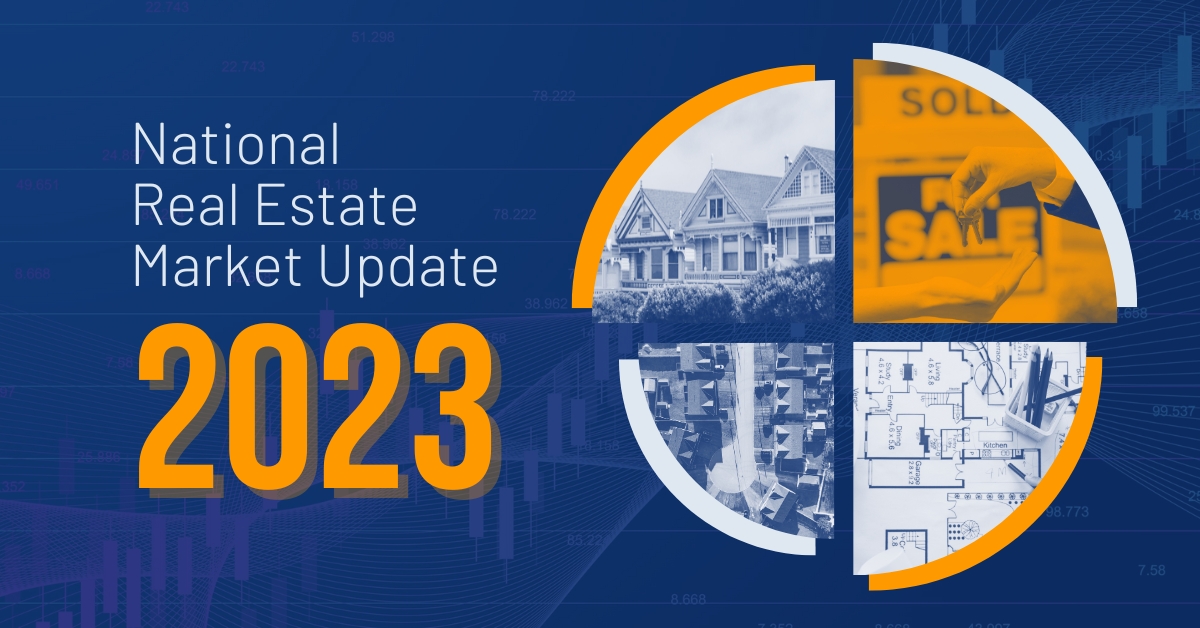

It’s the most wonderful time of the year. But for many families with festive plans and hectic schedules, it’s also the most wasteful.
According to one survey, for example, 60% of respondents admitted to throwing away more than usual during the holiday months as they filled up their trash bins with uneaten food, wrapping paper, gift bags, and commercial packaging.1
The reality is, Canadians routinely toss about 25% more trash during the holidays, according to Zero Waste Canada.2 In fact, we throw away so much wrapping paper that the waste, combined with castoff shopping bags, is estimated to weigh as much as 100,000 elephants.2,3
As our holiday schedules grow busier, many of us also forget to take simple steps at home to shrink our carbon footprints or prepare for a more energy-efficient winter.
Luckily, it’s not that hard to shift our habits and plan for a more sustainable and environmentally-friendly celebration. Here are five ideas for ringing in the holidays this year without overstressing Mother Nature.
1. PREP YOUR HOME FOR WINTER
Depending on the amount of time and resources you have available, you could cut your carbon emissions significantly this season just by winterizing your home. According to Natural Resources Canada, around 61% of the average home’s energy usage goes to heating.4
Investing in a more sustainable way to warm up your surroundings, such as a conventional or cold climate heat pump, could be especially impactful if your current HVAC is underperforming. The Canadian Climate Institute’s Heat Pump Calculator estimates that homeowners can potentially save hundreds of dollars a year by switching from a gas furnace to a more energy-efficient heat pump.5 Replacing old appliances or things like chronically leaking windows with newer, more energy-efficient solutions can also save you money over the long term.6 Plus, you may qualify for a federal grant or loan to help fund certain upgrades.7
You don’t necessarily have to spend a lot upfront, though, to prep your home for winter. Even simple tweaks—such as sealing windows and doors or upgrading to more energy-efficient window coverings—can lower your energy consumption and reduce your carbon footprint.8
Incorporating environmentally healthier habits into your routine can also make a meaningful difference. For example, Natural Resources Canada recommends dialling back your thermostat to 17 C when you’re sleeping or away and otherwise leaving it at 20 C.4
Consider an EnerGuide home evaluation to help you pinpoint what needs fixing and see if you qualify for a federal grant. An energy advisor registered with Natural Resources Canada will audit your home’s energy efficiency and provide you with a report and score.9
2. DECORATE SUSTAINABLY
Decking your home’s halls is one of the most jolly seasonal activities of all. There’s something special about gathering ’round with friends and family and relaxing in the comforting glow of a festively decorated space.
But since so much of the holiday-themed decor that’s sold in stores is notoriously disposable, it can be a challenge to spruce up your home sustainably. Cheaply produced and rarely recyclable, store-bought decorations are often made with plastic, styrofoam, and other environmentally unfriendly materials that can crowd landfills for generations.10
Luckily, you don’t have to trade style for sustainability when making your holiday decor. Thrifting is still in vogue, so consider crafting new and on-trend decorations out of secondhand finds or upcycling items already in your closet.
For example, you could transform an ill-fitting sweater into a holiday-themed pillow, turn teacups into candles, or turn leftover shipping boxes into creative decorations. Alternatively, natural decor foraged from your yard—such as dried leaves, flowers, pine cones, and branches—can make for especially beautiful wreaths and centrepieces.
If you do purchase store-bought decor, proactively look for the most environmentally friendly options. LED lights are now ubiquitous in stores and use far less energy than incandescent versions.11 Similarly, if you celebrate with a Christmas tree, think twice about choosing an artificial option. Plastic trees may be reusable, but natural trees are generally thought to have a smaller carbon footprint.2
3. CUT BACK ON HOLIDAY SHOPPING
Shopping online or at the mall may be convenient, but it can be costly for the environment. The greenhouse emissions from shipping and transportation alone add up fast, as do the emissions that are produced when an item is first made. According to the online consignment and thrift store, thredUp, around 4.5 billion pounds of carbon emissions could be saved if every consumer bought just one used item instead of new this year.12
Splurging on brand-new products also makes it more likely that the gently used but still functional items that you’ve got at home will wind up in the trash.
Rather than buy new, check vintage stores and consignment shops for unique gifts that you and your recipient can both feel good about. According to research by thredUp, most people are open to receiving gently-used presents, especially if they’re socially-conscious members of Gen Z.12 In fact, research by Value Village found that at least 80% of Gen Z members in Canada and the U.S. have already bought second-hand clothing.13 Alternatively, consider regifting items that you haven’t used, upcycling something you own, or try crafting gifts by hand.
Giving away special experiences, such as concert tickets or community memberships, may also be a more eco-friendly option. So is donating to a favourite charity in a gift recipient’s name or offering gifts of time, such as promising to help a loved one clean out their garage or fill their freezer with home-cooked meals.
Research shows that gift recipients often value thoughtful gifts with sentimental value, especially if they’re homemade or nostalgic or will provide them with a unique experience.14
And if you prefer to buy something tangible, look to local businesses that source or manufacture their goods nearby. Craft fairs and community markets are a great place to start. Or, give us a call and we’d be happy to share a list of our favourite local stores, depending on the type of gift and your budget. We make an effort to patronize the independently-owned shops and restaurants around town and would love to share our recommendations.
4. GREEN YOUR HOLIDAY DINNER
Do you hail from a family of passionate carnivores? If so, trading your meat for a vegetarian option may seem like a step too far—especially for a holiday dinner.
But swapping your meat for beans isn’t the only way to “’green” your holiday meal. For example, you can consciously source your meat from ethical sellers, prioritize local producers for seasonal sides, and serve enough filling vegetables to satisfy a large portion of your appetite.
You can also minimize food waste by planning ahead so that you don’t cook more than necessary. According to MoneySense, the average Canadian family of four tosses roughly 10% of their groceries in the trash, adding up to hundreds of dollars in wasted spending.15 To avoid buying more than necessary and throwing out good food too soon, check out Good Harvest’s Still Good to Eat Guide.16 The Natural Resources Defense Council’s dinner party “Guest-Imator” can also help you narrow down how much food you and your guests will actually need.17
Once you’re finished eating, clear the table immediately and either freeze the leftovers you’d like to keep or send guests home with reusable containers. Or, if you have untouched food that’s still whole or in unopened packaging, take it to a local food bank or homeless shelter. We’d be happy to share a list of options in our area.
5. DONATE OR RECYCLE WHAT YOU CAN
Once the festivities are over, the real work on behalf of Mother Nature begins. This is the time when taking a few minutes at the end of your holiday celebration to swiftly collect wrapping paper and ribbons, unwanted packaging, and other discarded items can make a real environmental difference by reducing what you send to landfills. Your goal should be to reuse what you can and compost or recycle what’s left over.
For example, if you upgrade any electronic gadgets over the holidays, you can conserve resources and limit pollution by donating or properly recycling your old versions. According to researchers at the University of Waterloo, the average Canadian generates about 25.3 kg of e-waste every year, including discarded cell phones, laptops, and appliances.18 But you can help trim that number by repairing or refurbishing products instead.
It can also help to reimagine new ways to make old traditions more eco-friendly. For instance, if lighting candles is part of your holiday celebration, consider choosing beeswax candles this year instead of the typical paraffin wax, which is a petroleum derivative. Not only are they cleaner burning and less toxic, but the leftover wax is biodegradable and can be composted, unlike traditional candle wax.19
There are also plenty of earth-friendly ways to dispose of a natural Christmas tree without kicking it to the curb. Trees that are sent to landfills release a potent greenhouse gas called methane.2 So, it’s important to properly dispose of a live tree, if you have one, so it can be recycled or composted. If you’re not sure how, reach out for a list of local options.
BOTTOMLINE
We can still celebrate a fun and festive season without draining our community’s resources or sending leftovers to the landfill. And remember, we’re here to lend a helping hand, now or in the new year. This is the perfect time to strategize your next move or set some real estate resolutions with personalized guidance from an expert. Reach out today to schedule a free consultation.
The above references an opinion and is for informational purposes only. It is not intended to be financial, legal, or tax advice. Consult the appropriate professionals for advice regarding your individual needs.
Sources:
- Eco Watch –
https://www.ecowatch.com/sustainable-decor-winter-holidays.html - CBC –
https://www.cbc.ca/radio/whatonearth/holidays-recycling-christmas-tree-composting-1.6688865 - Global News –
https://globalnews.ca/news/6229467/we-toss-540k-tonnes-of-wrapping-paper-after-the-holidays-heres-how-to-give-without-the-garbage/ - Natural Resources Canada –
https://natural-resources.canada.ca/energy-efficiency/spotlight-energy-efficiency/2020/11/05/winter-coming-top-tips-heat-your-home-for-less/23141 - Canadian Climate Institute –
https://heatpumpcalculator.ca/ - Natural Resources Canada –
https://natural-resources.canada.ca/energy-efficiency/homes/make-small-changes-add/21850 - Natural Resources Canada –
https://natural-resources.canada.ca/energy-efficiency/homes/canada-greener-homes-initiative/24831 - Canadian Geographic –
https://canadiangeographic.ca/articles/keeping-the-heat-in-and-the-cold-out-live-net-zero-families-take-on-home-envelope-challenge/ - Natural Resources Canada –
https://natural-resources.canada.ca/energy-efficiency/energuide/energuide-energy-efficiency-home-evaluations/after-your-energuide-home-evaluation/20572 - Architectural Digest –
https://www.architecturaldigest.com/story/best-holiday-and-seasonal-decor-for-the-environment - Statistics Canada –
https://www.statcan.gc.ca/o1/en/plus/2605-northern-electric-lights-stats-brighten-your-day-and-night - ThredUp –
https://newsroom.thredup.com/news/thredup-releases-thrift-for-the-holidays-report-revealing-that-new-waves-of-consumers-are-planning-to-gift-secondhand-this-year - BNN Bloomberg –
https://www.bnnbloomberg.ca/pre-loved-doesn-t-mean-second-best-young-canadians-thrift-holiday-gifts-1.1858787 - The Conversation –
https://theconversation.com/the-4-biggest-gift-giving-mistakes-according-to-a-consumer-psychologist-195169 - MoneySense –
https://www.moneysense.ca/spend/shopping/how-to-keep-food-costs-down-watch-for-food-waste/ - Good Harvest –
https://www.secondharvest.ca/resources/still-good-to-eat - Natural Resources Defense Council –
https://savethefood.com/guestimator - University of Waterloo –
https://uwaterloo.ca/news/media/canadian-e-waste-has-tripled-new-study-finds - CanICompostIt.com –
https://canicompostit.com/candle-wax/


















